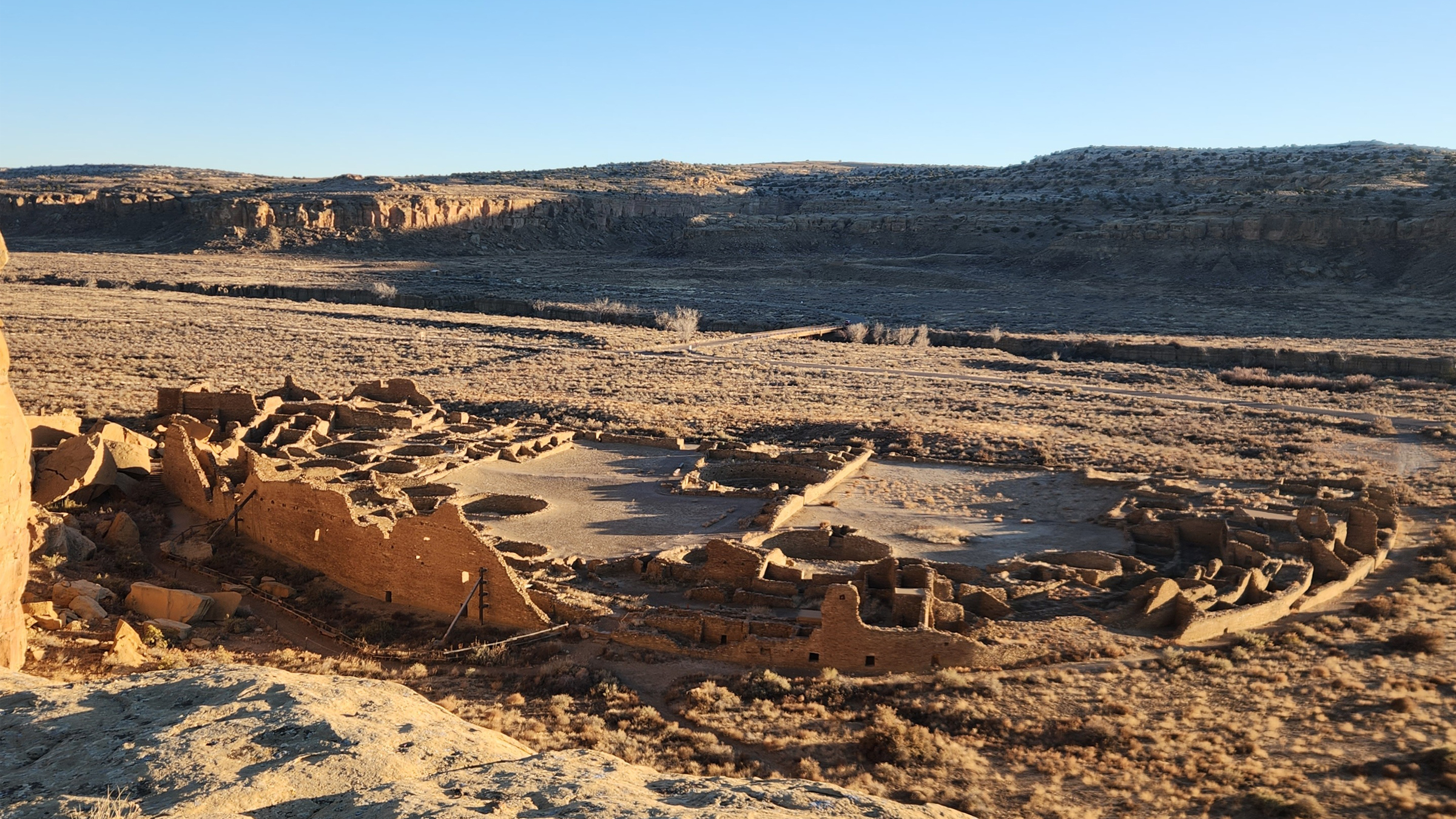
A “groundbreaking” DNA analysis of a small Pueblo tribe in New Mexico supports what their oral tradition has long described — that they’re related to ancestral people who lived on their land, as well as to Indigenous people who lived a few hundreds miles away at Chaco Canyon.
The new research is the first DNA evidence that the federally recognized tribe, known as Picuris Pueblo, has ancestral ties to Chacoans buried at Chaco Culture National Historical Park, a UNESCO World Heritage Site and a place many Southwest Indigenous peoples consider sacred.
“We’ve always said we have this deep connection to Chaco Canyon,” study co-author Craig Quanchello, the lieutenant governor of Picuris Pueblo, said at a news conference on April 29. “It not only runs through our veins, but now through science.”
Pueblo peoples
Picuris Pueblo, where the tribe lives, is in the Sangre De Cristo Mountains of northern New Mexico, about 60 miles (100 kilometres) north of Santa Fe. It was historically one of the most populated pueblos, with over 3,000 tribal members around 1600. But in the decades following European contact in 1591, death, disease and religious persecution reduced the Picuris population significantly. Now, tribal membership is around 300 individuals.
Related: Ancient Indigenous lineage of Blackfoot Confederacy goes back 18,000 years to last ice age, DNA reveals
Oral histories from Picuris elders have long connected the tribe to Chaco Canyon, Picuris Pueblo Governor Wayne Yazza said at the news conference. But knowledge lost over centuries of violence has led to gaps in historical knowledge.
To learn more about their genetic heritage, Picuris Pueblo leadership contacted researchers in 2020.
In that study, whose results were published Wednesday (April 30) in the journal Nature, researchers analyzed ancient DNA from 16 individuals buried in Picuris Pueblo dated to between 500 and 700 years ago, as well as 13 genomes from currently enrolled members of Picuris Pueblo. They compared these genomes to 590 ancient and modern genomes from the Americas and Siberia, since the first Americans traveled across a land bridge connecting Siberia with Alaska during the last ice age at least 23,000 years ago.
Their results revealed that the modern Picuris are related to those who lived in the pueblo centuries ago. The analysis also indicated that the Picuris are related to Anzick-1, a child who lived 13,000 years ago in what is now Montana and was part of an Indigenous American group called the Clovis. But “part of their [the Picuris] ancestry is actually older than the ancestry that we find in the Clovis individual,” study lead author Thomaz Pinotti, a geogeneticist at the University of Copenhagen, said at the news conference.
The study also found a genetic link between the Picuris and nine individuals buried centuries ago in Chaco Canyon’s Pueblo Bonito between 800 and 1130. Those individuals were analyzed in a 2017 Nature Communications study that faced backlash from tribal nations and researchers for failing to consult with local tribes during the study’s design.
“We were pretty twisted up about using these data, because we knew how controversial they were,” study co-author Mike Adler, an associate professor of anthropology at Southern Methodist University, said at the news conference. “When we brought this up to the tribal council, it was a very simple response: ‘That’s not your call. That’s our call. You should use these data, because it’s an avenue to better our understanding of our own past.'”
Meradeth Snow, an associate professor of anthropology at the University of Montana who wasn’t involved in the study, told Live Science the new study is “groundbreaking in a lot of ways.”
“The fact that this was really something that was initiated by the Picuris [people] — that is amazing and really interesting,” she said. However, she emphasized that this type of partnership may not be of interest to other Indigenous peoples. Western scientists have a long history of taking Native American ancestral remains and conducting studies without permission from tribes.
“I understand that there’s definitely going to be different tribes in that region that are not going to be for this [type of DNA analysis]. And that’s totally understandable. There’s certainly been plenty of abuse of DNA data.”



